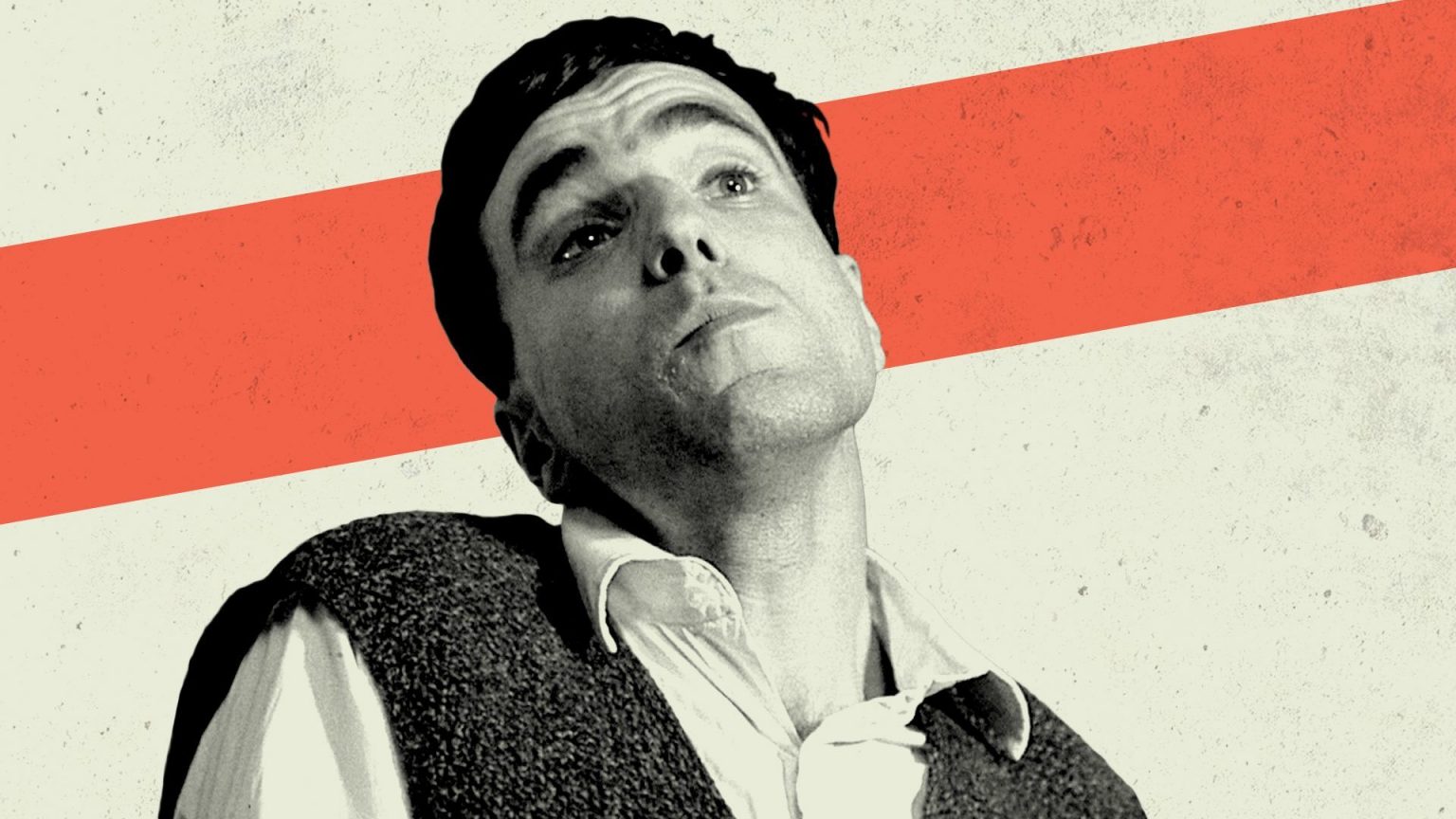Anecdotes and rumors abound about Daniel Day-Lewis’ style of method acting and the lengths to which the renowned actor is willing to go in order to truthfully portray a character. He apparently slapped Paul Dano (a lot) while filming Paul Thomas Anderson’s There Will Be Blood. He spent some time in a prison cell for In the Name of the Father and gave himself a jailhouse tattoo for The Boxer. While shooting Lincoln, everyone, including director Steven Spielberg, had to refer to him as “Mr. President.” He lived on the 17th century-styled set and didn’t shower while filming The Crucible, built canoes in preparation for The Last of the Mohicans, and learned to design and sew clothing for Phantom Thread. Whether or not these stories are entirely true, there is still much to be said about Daniel Day-Lewis’ devotion to each performance. Perhaps no film better exemplifies this work ethic than Jim Sheridan’s My Left Foot: The Story of Christy Brown.
The 1989 film is based on the eponymous 1954 autobiography of Christy Brown, an Irish man with cerebral palsy who learned to paint and write with the only limb he could control: His left foot. Early in the film, Brown is believed to be as disabled mentally as he is physical. It isn’t until he begins writing on a chalkboard with his left foot that his family realizes the young man has a rich inner world that he’s dying to express.
Brown soon finds an outlet in painting, which leads to a career as an artist and the writing of his autobiography. The film dances between a celebration of Brown’s work, and flashbacks to his upbringing and the moments that defined his personal and artistic growth. A wonderful cast of supporting characters rounds out the film, from his eternally-devoted mother (played by Brenda Fricker) to his stern but the proud father (Ray McAnally), but it’s ultimately Day-Lewis who defines the movie.
Day-Lewis says that he was inspired to take on the role after reading the script’s opening scene, in which Brown uses his foot to put on a record. Watching this happen onscreen is a marvel. With his foot, Brown drops the needle. The record skips. Using his foot, he picks the needle up again and corrects the alignment. One can feel the immense exertion coursing through Brown’s sweat-drenched body as he performs a task that would be absolutely ordinary to an able-bodied person.
Though the role’s physicality is its most apparent appeal, Day-Lewis also infuses Brown with an unparalleled level of emotional nuance. In one powerful scene, Brown has an outburst when he learns that the woman he loves is going to marry another man. It would be easy to pity Brown’s character in this upsetting moment, but Day-Lewis makes the experience more multidimensional than that. We’re not just watching a disabled person experience sadness — we’re feeling the actual weight of a man’s heartache.
Unsurprisingly, Day-Lewis’s off-screen preparation for the role was thorough. He spent eight weeks at a cerebral palsy clinic in Dublin learning to live as Brown did. He barely left his wheelchair for the duration of filming, going so far as to demand that crewmembers carry him from place to place when wires or set pieces obstructed his path. He learned to speak as Brown did and to write with his foot. Also unsurprisingly, Day-Lewis went on to win the Academy Award for Best Actor in 1990 for his portrayal of Brown.
In popular culture, there’s an undeniable mystique surrounding such “method acting.” The term generally refers to an acting technique in which a performer attempts to completely identify with his or her part. Marlon Brando, Al Pacino, Robert De Niro, Heath Ledger, Hilary Swank, Nicolas Cage, and Jim Carrey are just some of the actors who have been known to utilize the technique. The recent documentary Jim & Andy: The Great Beyond details how Carrey refused to break character when playing Andy Kaufman in Miloš Forman’s Man on the Moon, often to the chagrin of those around him. The buzz that the technique generates is understandable. Method acting represents an extreme and uncompromising style, one that inevitably leads to polarized opinions, occasional controversy, and juicy behind-the-scenes stories. Day-Lewis himself asserts that he prefers not to think about the mystique of his method and that he’s only concerned with understanding the life that he’s trying to portray.
Day-Lewis has said that what inspired him about My Left Foot’s record-playing scene was that he “knew it couldn’t be done.” It was the sheer impossibility of playing Christy Brown that compelled him to take the part. Perhaps more than any other role, Christy Brown demanded that Day-Lewis do the impossible and truly become someone else.
While stories about the extreme nature of Daniel Day-Lewis’ preparations — the tattoo, the canoes, slapping Paul Dano — are fun, they belie the genuine humility with which he actually approaches his work. To him, there’s simply no other way. Day-Lewis has spoken of the emptiness he often feels after completing a role — how he must say goodbye to the persona with which he briefly shared. It’s a good thing for us that the product of his work, the film, is just the opposite. Though his identification with a role may be temporary, the audience gets to have it forever.




